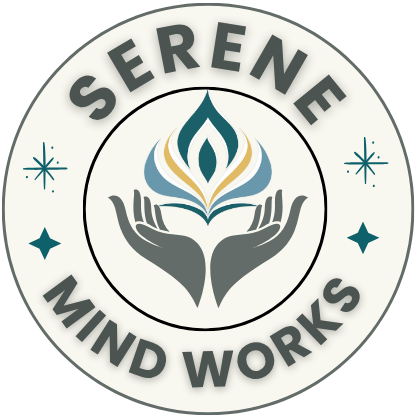
Mindfulness isn’t just about yoga mats and long meditations. It slots quite perfectly into your daily work routine too. At its core, mindfulness involves paying attention to the present moment without judgment. In the bustling world of work, this means being fully engaged in whatever task you’re handling right now, whether it’s writing an email or attending a meeting.
So why care about mindfulness at work? Well, it’s all about tuning into your environment and your role in it. This awareness can help boost your mental clarity and reduce stress levels, which is like a breath of fresh air when things get hectic.
Imagine starting your day with a clear head, breezing through tasks without that constant feeling of rush. That’s one of the superpowers of mindful work. You might find you’re more productive, less likely to make mistakes, and generally, in a better mood.
Beyond just personal benefits, mindfulness can totally transform team dynamics. When everyone’s practicing it, meetings become more productive and communication improves. People start listening more and judging less. The magic lies in being fully present, and that can make work a lot more satisfying and less like a daily grind.
Practical Strategies for Practicing Mindfulness During Work Hours
Getting started with mindfulness at work doesn’t need a lot of fanfare. It’s about small, meaningful changes. Start with mindful breathing. Just taking a minute to breathe deeply can help center your thoughts. Focus on each inhale and exhale, and notice how it brings you back to the present moment.
- Try brief meditations during breaks. They don’t require a quiet room or a ton of time. Even a few minutes with your eyes closed at your desk can work wonders. And let’s not forget mindful listening. In meetings, pay attention to what colleagues say instead of thinking about your response. It builds better connections and understanding.
- Integrating these practices becomes easier with a little structure. Perhaps begin your morning with a mindful review of tasks for the day. As things get busy, steal a few moments to check in with yourself. Are you overwhelmed? Take a breather, even if it’s just a bathroom break to clear your mind.
- Sometimes distractions are part of the deal, especially in a buzzing office. Instead of resisting, acknowledge distractions when they pop up. Use them as reminders to reset your focus. Remember, it’s not about blocking everything out but about gently guiding your attention back to where you want it to be.
Keep in mind, there’s no one-size-fits-all here. Experiment with what feels natural and see how mindfulness fits into your work routine. Soon enough, these practices could become as automatic as your morning coffee run.
The 5 R’s and 3 C’s of Mindfulness at Work
The 5 R’s of mindfulness can serve as a handy guide when you’re looking to apply mindfulness at work.
- Recognize: notice what’s happening internally and externally without jumping to conclusions. It’s like being your own observer, spotting triggers before they spin into full-blown stress.
- Relax: This isn’t about zoning out; it’s about calming your mind to see things more clearly. This might happen through a short breathing exercise or stepping away from your desk for a moment.
- Re-center: Involves bringing your focus back to where you want it. If you get swept away by tasks or emotions, acknowledge it and gently guide your attention back to the main objectives.
- Reflect: Let’s you take a step back and understand why you’re feeling what you’re feeling. It’s a chance to learn from each experience instead of reacting purely on impulse.
- Respond: With clarity gained from the previous steps, your response can be more measured and thoughtful, helping you tackle challenges more effectively.
The 3 C’s of mindfulness complement these steps beautifully: Curiosity, Compassion, and Consistency.
- Curiosity pushes you to explore your thoughts and feelings without judgment, opening up new perspectives.
- Compassion, on the other hand, is about extending kindness to yourself and others, even on those tough days when nothing seems to go right. It’s a game-changer for office dynamics.
- Consistency, the glue that holds it all together. Regular practice ensures mindfulness isn’t just a workplace fad but a part of your everyday work life.
The benefits you’ll see—greater peace, focus, and collaboration—are well worth the effort.
Cultivating a Mindful Workplace Culture
Fostering mindfulness in the workplace isn’t just a solo mission. To really see the benefits, it needs to be part of the culture. Organizations can play a huge role in creating a mindful environment by encouraging practices that promote well-being and focus.
- Leadership sets the tone. When leaders prioritize mindfulness, it sends a clear message to the entire team. Simple actions like starting meetings with a moment of silence or reflection can normalize mindfulness at work. It shows that taking time to recharge is valued, not shunned.
- Some companies have embraced mindful initiatives that range from meditation rooms to structured workshops. These initiatives encourage employees to bring their full selves to work and foster a more inclusive environment.
- Real-life examples can be inspiring. Consider companies that provide mindfulness classes or integrate wellness into their daily routines. These organizations often report higher employee satisfaction, reduced burnout, and better teamwork.
- Promoting a culture where mindfulness is the norm rather than the exception creates much more than just a nicer workplace vibe. It’s about building a foundation where productivity and well-being go hand in hand.
When everyone’s on board, the benefits span from individual growth to boosted collective morale and output.
